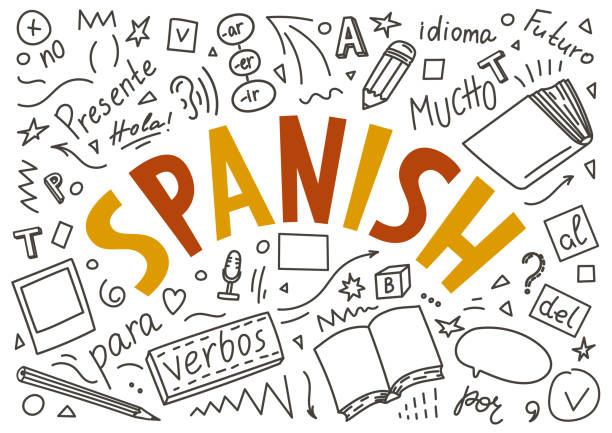Introduction to Spanish A Levels
The Spanish A Level is a critical juncture in the academic journey for students at Thomas Keith Independent School who aim to gain proficiency in the Spanish language.
Achieving a high level of proficiency in Spanish can open numerous opportunities, including enhanced academic credentials and global communication capabilities.
Spanish A Level is designed to push students from an intermediate to an advanced stage of language mastery. It not only reinforces existing language skills but also introduces learners to complex language structures and advanced vocabulary.
The curriculum is aligned with the Common European Framework of Reference for Languages (CEFR), which identifies the stages of language learning from A1 (beginner) to C2 (proficiency). Spanish A Level typically corresponds with levels B1 to C1, ensuring students can communicate fluently and spontaneously, engage in detailed discussions, and express their opinions in both written and spoken forms.
At Thomas Keith Independent School, we understand the personal and academic importance of mastering a foreign language. Spanish A Level is not merely about improving one’s language skills; it’s an immersive programme that encourages students to express complex ideas and interact with native speakers in a social context. The focus on cultural matters alongside language proficiency helps students develop a comprehensive understanding of Spanish-speaking countries, enriching their personal and educational experience.
Moreover, undertaking the Spanish A Level equips students with valuable skills relevant in various professional fields, enhancing employability in careers that require a command of an international language.
Our A-Level Spanish programme integrates a variety of teaching methods, including online courses and interactive modules, tailored to meet the unique needs of each student.
By enrolling in our Spanish A Level courses, students embark on a transformative educational experience that propels them to higher levels of academic achievement and personal growth.
Understanding the CEFR Spanish Levels: A1 to C2
The Common European Framework of Reference for Languages (CEFR) is a vital tool in defining and measuring Spanish language proficiency, including Spanish A Level, across a standardized scale known as A1 to C2.
These six CEFR levels aim to quantify a student’s ability to understand, speak, and write in Spanish effectively.
For institutions like Thomas Keith Independent School, offering a curriculum aligned with the CEFR ensures that learners gain comprehensive linguistic abilities at various stages, from beginner to proficient.
At the A1 Spanish level, students are introduced to the basics.
This initial stage focuses on simple phrases and expressions necessary for meeting basic needs, which are essential for social interaction.
A1 learners can engage in routine conversations and comprehend familiar topics.
Progressing to A2, learners acquire the ability to handle dialogues revolving around everyday matters, demonstrating a deeper understanding of sentences and commonly used expressions.
This intermediate level encourages students to converse about familiar, routine tasks and matters of direct relevance.
B1 Spanish Level marks the transition to more independent language use.
Students begin to produce simple, connected text on familiar topics.
At this stage, learners are expected to understand the main points of clear standard input about common issues such as work, school, and leisure.
B2 takes students from understanding to producing more complex language structures.
At this advanced level, they are capable of interacting with native speakers with a degree of fluency and spontaneity, making regular interaction simple and less effortful.
Moving to C1, Spanish learners are expected to express themselves fluently and spontaneously without much obvious searching for expressions.
They can use language flexibly and effectively for social, academic, and professional purposes.
Finally, the C2 level represents mastery of the Spanish language.
At this stage, students can understand virtually everything heard or read effortlessly, summarise information from different spoken and written sources, and express themselves using precise and nuanced language.
For students aspiring to excel in Spanish A Levels, understanding these CEFR standards is essential as it provides a roadmap for language acquisition, ensuring systematic progress towards fluency.
The focus at Thomas Keith Independent School is to navigate students across these levels, equipping them with the necessary skills and linguistic competences that will be applicable in diverse academic and social contexts.
The integration of CEFR into the Spanish A Level curriculum reflects a commitment to developing learners’ full communicative competence, enlivening their educational experience.
What You Learn at Each Spanish Level
Understanding what you learn at each Spanish level is pivotal for those aspiring to achieve proficiency in the language.
At Thomas Keith Independent School, we provide comprehensive insights into the progression through these stages with our Spanish A Level programmes.
This detailed overview encompasses the competencies and knowledge expected at every stage, from beginner to advanced levels, following the globally recognised CEFR standards.
The initial stage, A1, is aimed at introducing learners to basic Spanish.
At this fundamental level, students will acquire essential vocabulary, allowing them to comprehend and use everyday expressions and phrases for routine transactions.
Basic sentence structures are taught, enabling learners to interact in a simple manner when the other person speaks slowly and clearly.
Progressing to A2, the focus is on enhancing familiarity with commonly used expressions related to areas of immediate relevance.
At this level, learners expand their vocabulary to include topics such as personal information, shopping, and employment.
Grammatical structures become more varied, allowing students to construct simple sentences to describe their environment and communicate basic needs.
In the B1 level, learners experience an intermediate stage where they begin to express themselves more freely on familiar topics.
An understanding of the main points in discussions related to work, school, and leisure activities is developed.
This level builds on interactive and productive skills, enabling students to recount experiences, describe events, and briefly explain opinions and plans using coherence.
At the B2 level, learners achieve an upper-intermediate understanding of the language.
This stage focuses on increasing fluency and spontaneity in conversation.
Students learn to produce detailed text on a wide range of topics, showing proficiency in understanding the core ideas of complex subjects.
Special emphasis is placed on areas such as grammar, vocabulary enhancement, and cultural context.
C1 represents an advanced level of proficiency where learners can comprehend a wide array of demanding texts and engage in discussions on abstract topics fluently and spontaneously.
Students learn to use language flexibly for social, academic, and professional purposes, constructing well-structured and detailed presentations.
Finally, at the C2 level, learners attain mastery of the language.
This ultimate stage ensures they can understand virtually everything heard or read with ease.
Learners at this stage can summarise information from various spoken and written sources, reconstructing arguments and accounts in a coherent presentation.
The ability to express themselves spontaneously, fluently, and precisely, differentiating finer shades of meaning even in complex situations, is a hallmark of the C2 level.
At Thomas Keith Independent School, each Spanish level is meticulously crafted to ensure students not only learn the language but also embrace the cultural nuances that accompany a rich linguistic journey.
Our Spanish A Level programme is designed to facilitate this journey, making learning engaging and impactful.
By understanding what each level entails, students can set realistic goals and measure their progress effectively, ultimately leading to higher proficiency in Spanish.

Benefits of Taking Spanish A Level Exams
Taking the Spanish A Level exams can offer a plethora of benefits for students pursuing language proficiency within an academic context.
For students at Thomas Keith Independent School, achieving a Spanish A Level can significantly enhance their understanding of the Spanish language and culture, while also opening doors to a range of academic and career opportunities.
Firstly, the Spanish A Level serves as an important academic credential that reflects a student’s high competency in Spanish.
This qualification is widely recognised by universities and employers, both in the UK and internationally, as evidence of language proficiency, thus enhancing applications to higher education institutions or global job markets.
Additionally, preparing for the Spanish A Level exams sharpens essential language skills, including speaking, reading, writing, and listening.
Students engage with complex texts and engage in conversations on various topics, thereby improving their ability to communicate fluently in Spanish.
This intensive preparation fosters greater language appreciation and cross-cultural understanding, equipping students with the skills needed to interact effectively in diverse social and professional settings.
Moreover, Spanish A Level exams encourage independent learning and critical thinking.
Learners develop the ability to analyse content, construct well-informed arguments in Spanish, and express ideas coherently.
This skill set is invaluable not only in further educational pursuits but also in professional environments that require analytical and communication skills.
Furthermore, the process of studying for Spanish A Level exams aids in setting concrete goals, encouraging students to measure progress and remain motivated throughout their learning journey.
This results in not only improved language proficiency but also a greater sense of achievement and personal growth.
In summary, the Spanish A Level exams at Thomas Keith Independent School offer substantive benefits, from academic progression to enhanced cultural competencies, making them an ideal choice for students seeking to deepen their knowledge and command of the Spanish language.
Choosing the Right Spanish Course for Your Level
Selecting the appropriate Spanish course is integral for those aiming to excel in the Spanish A Level examinations or simply enhance their linguistic proficiency.
The Spanish A Level is a significant academic milestone that necessitates careful consideration of one’s current language abilities and learning objectives.
Understanding your current proficiency is the first step toward selecting an optimal course that aligns with your Spanish learning journey.
Online Spanish level tests, offered for free by various educational institutions, provide a valuable tool to precisely evaluate your skills.
These assessments help identify your current level, whether you are at the beginner stage, like A1, or aiming for the advanced competencies of B2 or higher.
Using this data, you can choose a course that consistently challenges you, thus ensuring gradual advancement in your Spanish abilities.
It is essential to consider the curriculum focus when choosing a Spanish course.
Some courses might concentrate on conversational skills, while others may dive deeper into grammar or cultural studies.
For individuals targeting the Spanish A Level, a comprehensive course that covers both conversational fluency and complex grammatical structures is advisable.
This specialised focus not only prepares you for the exams but also equips you with essential communication skills applicable in academic and social situations.
Course delivery format is another crucial factor.
With the prevalence of online education, many students might find online Spanish courses more convenient and flexible.
At Thomas Keith Independent School, we understand the demand for such flexibility, offering students digitally tailored solutions that meet their unique pacing and scheduling needs.
Our course structure ensures that you, whether in the UK or abroad, can engage with high-quality Spanish education that harmonises with your academic goals.
Finally, personal learning requirements, such as preferred teaching methodologies and interaction levels with instructors, should guide your course selection.
Courses offering interactive sessions, regular assessments, and feedback mechanisms contribute significantly to a student’s confidence and proficiency.
Aligning these factors with your personal learning style enhances the educational experience and leads to better retention and application of language skills.
In conclusion, choosing the right Spanish course involves evaluating your proficiency, understanding course focuses, considering delivery formats, and aligning them with personal learning requirements.
At Thomas Keith Independent School, our expertly crafted courses aim to provide a balanced approach for all students aspiring towards the Spanish A Level, ensuring you are well-prepared to excel in your examinations and gain substantial command over the Spanish language.
Online Spanish Level Tests: Measure Your Progress
In the pursuit of mastering the Spanish language, online Spanish level tests serve as invaluable tools to measure your progress accurately.
These tests are designed to evaluate your current proficiency and guide you in determining the most suitable Spanish course or a level Spanish class that aligns with your skills and learning objectives.
At Thomas Keith Independent School, we understand the importance of selecting the right educational pathway, and an online test can provide a clear understanding of where you stand in your Spanish learning journey.
Online Spanish level tests typically encompass a range of questions aimed at assessing various language competencies.
These include grammar, vocabulary, reading comprehension, and listening skills.
By taking these tests, learners can discern their strengths and areas that require further improvement.
Spanish A-level exams incorporate similar assessments, ensuring that students are well-prepared for both academic and real-world applications of the language.
One of the primary advantages of online testing is its convenience and flexibility.
Students have the ability to complete tests at their own pace and in a comfortable environment, allowing for a more accurate reflection of their knowledge and abilities.
This adaptability is essential for our students at Thomas Keith Independent School, who may be balancing multiple academic commitments.
Furthermore, online Spanish level tests can be used as benchmarks to set realistic and achievable goals.
After determining their current level, students can use this information to select appropriate courses or resources designed to elevate their proficiency.
This strategic approach to learning Spanish not only saves time but also ensures a more personalised and effective educational experience.
In conclusion, utilising online Spanish level tests as a measure of progress is an effective method to enhance your learning strategy.
Accurate assessments are pivotal for recognising your language skills and aligning them with the correct Spanish course or a level Spanish class.
At Thomas Keith Independent School, our commitment to providing comprehensive and tailored educational pathways is supported by such innovative tools, ensuring students are well-equipped to achieve their linguistic goals.
Spanish Language Learning Destinations
The Spanish A Level journey can be significantly enriched by immersing yourself in Spanish-speaking environments, making language learning destinations an essential consideration for students aiming to succeed in their Spanish A Level exams.
One of the most compelling benefits of travelling to a country where Spanish is the primary language is the opportunity to practice daily and naturally, which is indispensable for achieving fluency.
Spain, with its diverse regions and rich cultural heritage, provides myriad opportunities for such immersive learning.
Madrid and Barcelona, for instance, offer well-established language programmes specifically designed for A Level Spanish students.
These programmes not only enhance language proficiency but also provide insight into the vibrant Spanish culture, which is integral to understanding the language holistically.
Beyond Europe, Latin American countries like Mexico, Argentina, and Colombia present equally valuable opportunities for immersive language study.
Each of these destinations offers a distinct dialect, accent, and cultural milieu, allowing Spanish A Level students to develop a well-rounded understanding of the language as it is used in various contexts.
Mexico is renowned for its clear and neutral accent, making it a favourable destination for those at the beginner or intermediate Spanish A Level.
Argentina, with its unique Rioplatense Spanish, challenges students to comprehend different linguistic nuances, providing a depth of understanding often missed in classroom settings.
Meanwhile, Colombia is celebrated not only for its friendly locals but also for its high standard of Spanish language education, making it an ideal place for students aiming to achieve fluency in Spanish A Level.
In addition to cultural immersion, these destinations often offer specialised courses tailored to the curriculum of A Level Spanish and aligned with international standards.
Choosing the right destination for your Spanish language learning journey can thus significantly enhance your educational experience and help you achieve the competencies required for Spanish A Level.
Ultimately, by exploring these Spanish-speaking regions, students can greatly improve their language skills, making the global aspect of language learning an indispensable part of mastering the Spanish A Level.
Tips for Improving Your Spanish Proficiency
Achieving proficiency in Spanish is a rewarding journey that can open doors to a wealth of cultural and professional opportunities.
Whether you’re aiming for the Spanish A Level or simply wish to improve your language skills, adopting effective strategies is essential for progress.
One of the most effective ways to enhance your Spanish proficiency is through consistent practice.
It is crucial to immerse yourself in the language regularly by integrating it into your daily life.
You can achieve this by listening to Spanish podcasts, watching Spanish films with subtitles, or reading Spanish books that match your level.
This not only improves comprehension but also gets you familiar with the rhythm and intonation of native speakers.
Enrol in a structured Spanish course that aligns with your current level, be it beginner or advanced.
Thomas Keith Independent School offers a range of courses tailored to various proficiency levels, including the Spanish A Level.
Structured courses provide a comprehensive curriculum and systematic progression, ensuring you develop all the essential skills: speaking, listening, reading, and writing.
Engage in conversation with native speakers as often as possible.
This can be in person, through language exchange programmes, or online platforms.
Conversing with native speakers helps in building fluency and confidence in using the language spontaneously in social and academic contexts.
Utilise language learning apps that offer interactive and personalised learning experiences.
Apps such as Duolingo or Babbel can supplement your regular studies and provide immediate feedback, helping you track progress and identify areas for improvement.
Set measurable goals and regularly test your abilities with online Spanish level tests.
Understanding your progress gives you motivation and identifies the skills that need more focus.
Many online tests provide detailed feedback, which can be invaluable for learners at any stage, from those preparing for the A Level Spanish to complete beginners.
Incorporate Spanish into your routine by labelling objects at home with their Spanish names or maintaining a journal in Spanish.
These simple practices reinforce vocabulary learning and language retention.
Lastly, stay motivated and remind yourself of your personal and professional reasons for learning Spanish.
Whether it’s enhancing your resume, travelling to a Spanish-speaking country, or simply the joy of learning a new language, clear goals keep you focused and resilient in your language-learning journey.
By integrating these strategies into your language studies, you will not only improve your Spanish proficiency but also gain the confidence to communicate effectively in diverse settings.

Conclusion: Achieving Fluency in Spanish
Achieving fluency in Spanish is a dynamic and rewarding journey that can be significantly enhanced through the structured learning provided by the Spanish A Level curriculum.
At Thomas Keith Independent School, we recognise the importance of proficiency in multiple languages and how it can provide students with a competitive edge in both academic and professional fields.
The Spanish A Level serves as a comprehensive guide, offering a well-rounded foundation that builds on language proficiency step by step.
This structured approach is crucial for students aiming to reach an advanced level of fluency, a highly desirable skill in today’s globalised world.
The Spanish A Level is not merely about understanding grammar or vocabulary; it’s about engaging with the language on a deeper level.
This means developing the ability to communicate effectively in a variety of contexts, understand cultural nuances, and express personal ideas with clarity and precision.
Such competencies are indispensable for those who wish to use Spanish in professional or social settings.
Achieving fluency in Spanish through A Level study opens numerous opportunities, from studying abroad in Spanish-speaking countries to enhancing career prospects in international domains.
As language learners progress through the levels—from beginner to advanced—they not only develop linguistic skills but also cultivate a greater appreciation for Spanish-speaking cultures.
This holistic understanding is what truly defines language fluency, where achieving a balance between language proficiency and cultural familiarity becomes the ultimate goal.
By following the Spanish A Level pathway, students can embark on a journey towards achieving fluency in Spanish, armed with the tools and knowledge to excel.
At Thomas Keith Independent School, we are committed to supporting our students every step of the way, ensuring they have the resources and guidance needed to succeed in this linguistic achievement.




